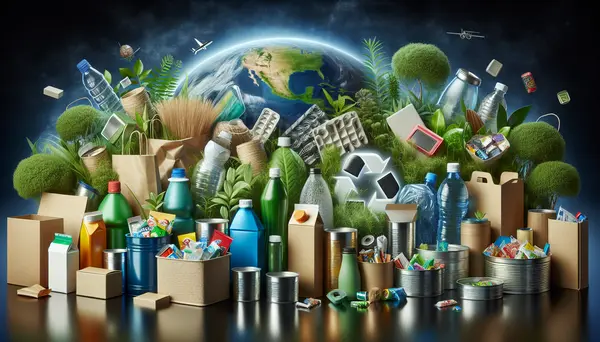Table of Contents:
Introduction
Packaging is an integral aspect of every product that we consume or use. However, the growth in consumerism and the rapid expansion of industries have led to an alarming increase in packaging waste, much of which ends up in our landfills or oceans. Given this context, recycling in packaging has taken center stage, presenting a viable solution for mitigating environmental degradation while meeting consumer demands. This article will explore the role, benefits, challenges, and future prospects of recycling in the packaging industry.
Understanding Recycling in Packaging
Recycling is a process wherein waste materials are collected, processed, and transformed into new products, thereby reducing the volume of waste sent to landfills and the demand for virgin materials. In the context of packaging, recycling involves the use of recycled materials in the production process or the creation of packages that can be easily recycled post-consumer use.
Advantages and Disadvantages of Recycling in Packaging
| Pros | Cons |
|---|---|
| Minimizes the use of natural resources | Quality of recycled material may sometimes be lower |
| Reduces waste and conserves landfill space | Recycling processes can consume energy and produce carbon emissions |
| Increases consumer awareness about the environment | Costs of recycling programs can be high |
| Creates green jobs in the recycling and manufacturing industries | Success depends on the end-user behaviour |
Benefits of Recycling in Packaging
Recycling in packaging presents several benefits. Firstly, it reduces the demand for raw materials, thereby conserving natural resources and limiting environmental damage. Secondly, it decreases waste accumulation in landfills and oceans, curbing pollution and habitat destruction. Lastly, recycling in packaging aligns with growing consumer awareness and demand for eco-friendly practices, enabling businesses to strengthen their brand image and sustainability credentials.
Challenges of Recycling in Packaging
Despite its advantages, recycling in packaging faces certain challenges. One of the major challenges lies in the complexity of packaging materials. Many packages are made from multiple materials or layers, which can be difficult to separate and recycle. Furthermore, contamination from residual product can make the recycling process more complicated and costly.
Also, while the use of recycled materials is environmentally beneficial, it can sometimes compromise the quality, safety, and aesthetic appeal of the packaging, which are critical factors from a consumer and industry perspective.
Lastly, the success of recycling efforts depends heavily on consumer participation and well-established waste management infrastructure, which may not be robust in all regions.
The Future of Recycling in Packaging
While challenges persist, the future of recycling in packaging looks promising. Technological advancements are making the sorting and processing of recycled materials more efficient and economical. New innovations such as chemical recycling are opening avenues for recycling previously non-recyclable materials.
Moreover, the concept of a circular economy is gaining traction. This model emphasizes keeping materials in use for as long as possible, through practices like recycling, to create a closed-loop system that minimizes waste and resource extraction. Packaging producers are increasingly adopting this model, designing packages with recyclability in mind, and using a higher proportion of recycled content.
Conclusion
Recycling in packaging is not just an industry trend, but an imperative for a sustainable future. It presents a significant opportunity for businesses to reduce their environmental footprint, meet consumer expectations, and contribute to a more circular economy. Although challenges remain, continuous innovation, coupled with concerted efforts from industries, governments, and consumers, will undoubtedly pave the way for a more sustainable packaging landscape. As we move forward, the mantra of 'Reduce, Reuse, Recycle' in packaging will continue to resonate louder than ever.
Critical FAQ for Sustainable Packaging for a Greener Future
What is sustainable packaging?
Sustainable packaging is the development and use of packaging which results in improved sustainability. It involves increased use of life cycle assessments and a reduction in environmental impact and ecological footprint.
Why is sustainable packaging important?
Sustainable packaging has a low impact on energy consumption and on the environment. It minimizes the usage of resources and reduces the carbon footprint, thus contributing to a greener future.
How is recycling a part of sustainable packaging?
Recycling is a key component of sustainable packaging. It involves the process of converting waste materials into reusable materials, thereby reducing the consumption of fresh raw materials, energy usage, and environmental impact.
What materials are used in sustainable packaging?
Sustainable packaging uses materials like recycled paper and plastic, biodegradable materials, plant-based packaging materials, and other renewable resources.
What is the future of sustainable packaging?
The future of sustainable packaging is promising. There is increased awareness and demand for eco-friendly products from both companies and consumers, coupled with advances in technology and materials. This is driving the packaging industry towards more sustainable solutions.






